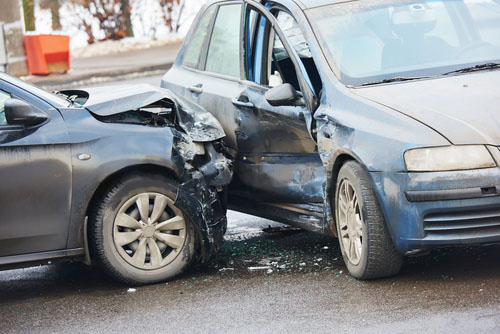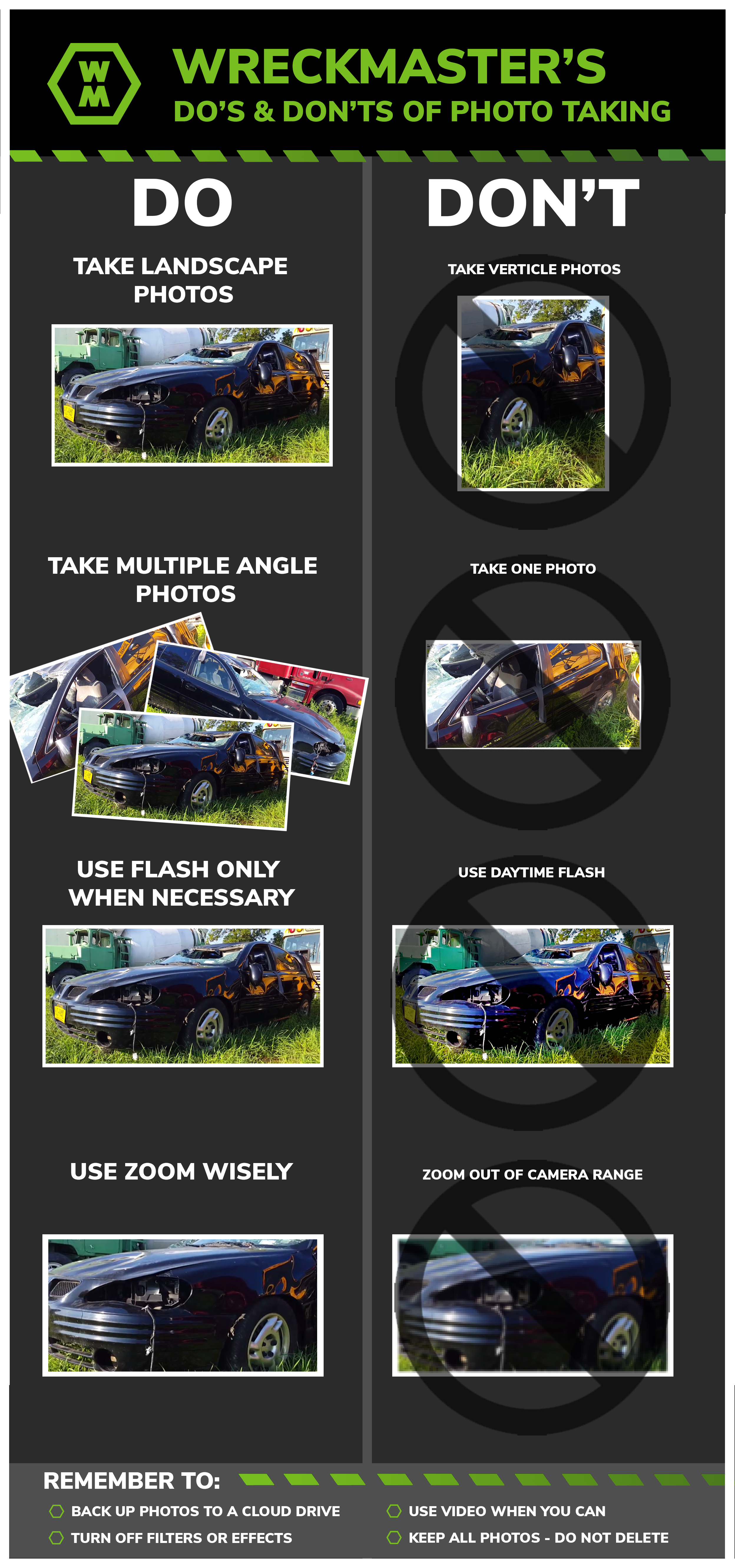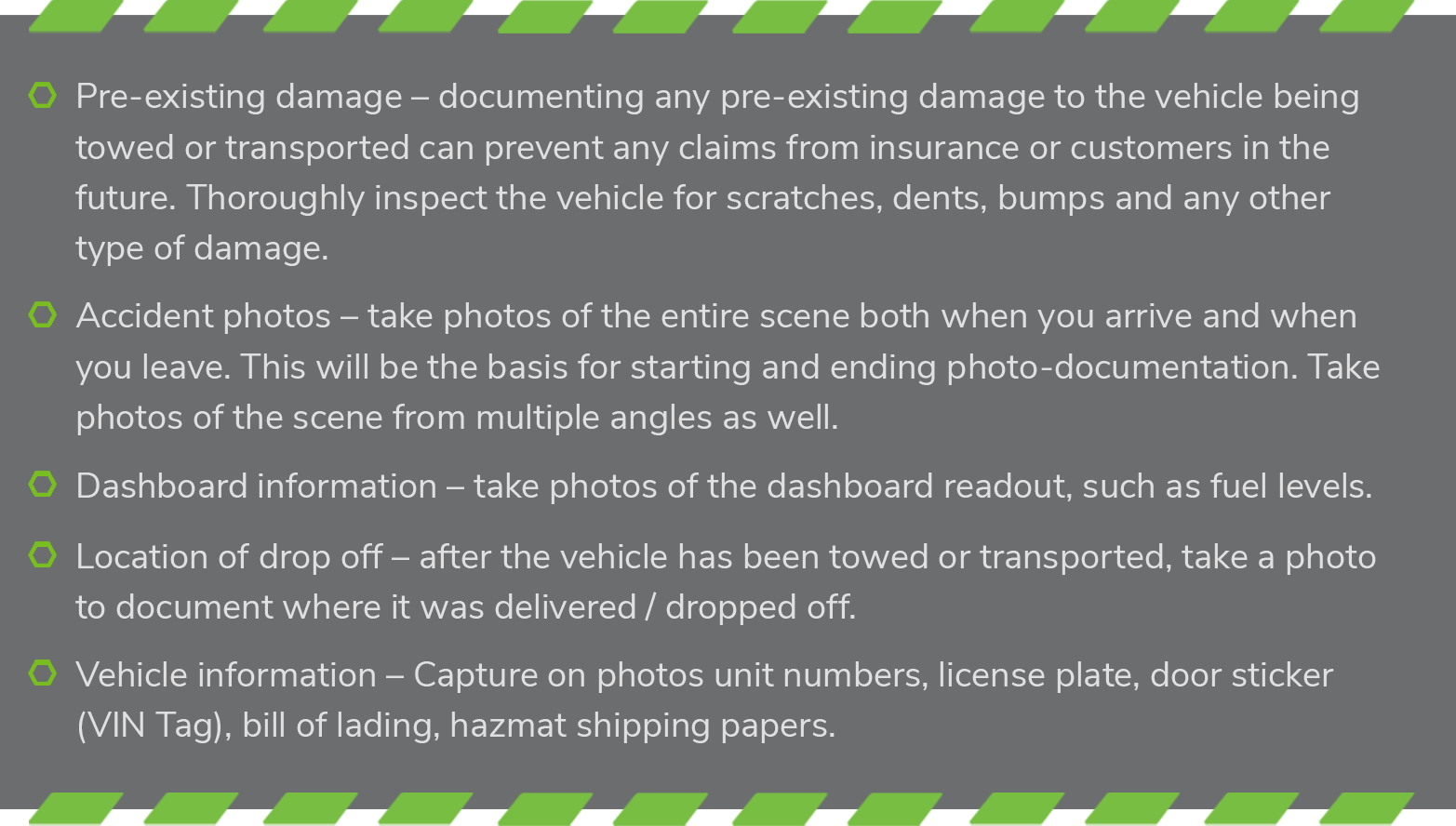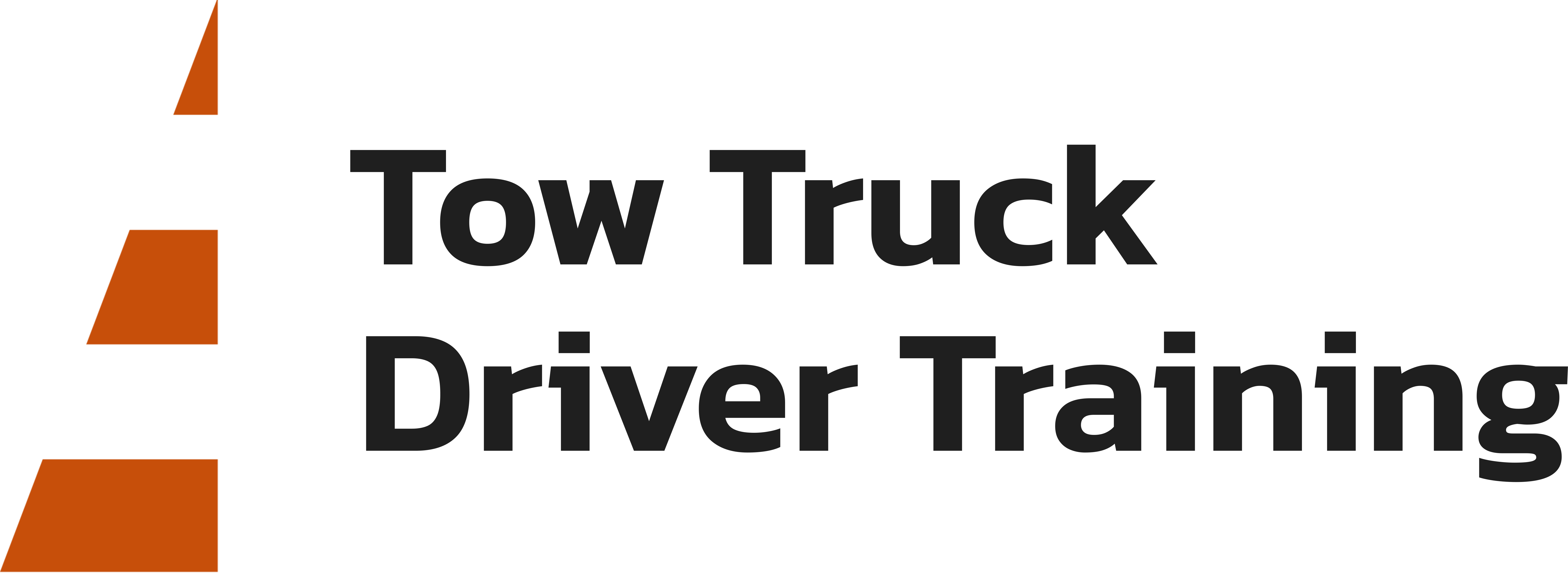Taking Photos on Scene
WHY TAKE PHOTOS?
The photos taken at the scene of an accident or any other type of job can serve as official documentation for the project. This means that they must be clear, professional and have the same degree of quality of any work-related paperwork or documentation.
While some companies may provide a camera, photos will generally be taken on smart phones. Understanding how to use your camera is important to taking professional and high-quality photos.

BEST PRACTICES

Below area list of best practices for taking photos while on scene:
- Take landscape photos – when taking photos, it is recommended to take photos in landscape orientation (with your device rotated sideways). This will capture a wider surface area when taking a photo up close. This is also more logical as most screens are in landscape orientation, such as computer and television screen
- Take multiple photos – always take multiple captures of the same subject, even if the image appears clear. Though they may appear clear on a smart phone, images can be out of focus or distorted when displayed on larger screen Taking multiple photos gives a higher probability of having clear photos.
- Multiple angles – thorough photo-documentation should always have multiple angles of the same subject to ensure nothing is missed. Treat the scene like a box, taking photos from all four corners to make sure the whole area is captured.
- Only use flash when absolutely necessary – photo flash on smart phones creates glare and light reflection off the subject you are shootin Whenever possible, adjust the white balance to compensate by tapping on the subject area on your screen. Many smart phones also come with some form of low light setting. A secondary light source such as a flashlight can also illuminate the area without the negative effects of a smart phone flash. Take photos with no light, the flash and a flashlight to determine which works best.
- Backup photos to a cloud drive – storing the photos on an online server will ensure they are still accessible in the event of a lost, damaged or stolen phone or camera. Many free options for cloud storage are availab
- Use zoom wisely – zooming in too far on your device’s camera will cause distortion in the image and make the subject more difficult to see. When a close up is required, physically move closer to the subject and avoid zoom whenever possible.
- Use video – while photo documentation is usually adequate, video can often be useful. Ifthe occasion calls for it, film it, but do not use it completely in place of photograph Refrain from zooming video in too far.
- Turn off effects or filters – be sure that your camera is set to normal setting while shootin
- Do not delete – keep all photos, even those that don’t turn out. Deleted photos can hurt in the case of a claim against an operator. Be sure that any photos being removed from a device are backed up or stored on a server or cloud storage.
SUGGESTED PHOTOS
Every scene is different, however WreckMaster recommends documenting the following items while at a scene:

EXHAUST DAMAGE
On lower profile vehicles, the exhaust pipe may make contact with the ground when it is lifted for towing. Low profile vehicles should be placed on dollies whenever necessary.
AFTER MARKET PRODUCT DAMAGE
Always check that bed liners, covers and mirror covers are securely attached to a vehicle before towing as they can become loose or fly off the vehicle at high speeds.
HOODS & GATES
High winds can blow hoods, doors and gas tank covers open or off during transport, especially if they have been previously damaged. Always check that these components are secured and locked before towing.
